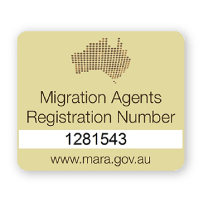How to Easily Calculate Your 88 Days for the Working Holiday Visa
If you’re applying for a Working Holiday Visa (WHV) in Australia, you’ve probably heard about the requirement to complete 88 days of specified work to extend your stay. But what exactly does “88 days” mean? It can be confusing, but don’t worry! We’ll break it down in a way that makes sense for everyone.
What is the Working Holiday Visa (WHV)?
Before diving into the 88 days, let’s talk a little about the Working Holiday Visa. This visa is designed for young people (usually aged 18-30 or 18-35 depending on your country) who want to visit Australia, work, and travel for up to a year. The best part? You can extend your stay for another year by completing a certain amount of work in regional Australia. That’s where the 88 days come in. To get help in getting your own working holiday visa, you might want to consult a Migration Agent in Sydney Melbourne, Perth or Brisbane. They can guide you through the application process, ensure you meet all the requirements, and help maximise your chances of approval.
Why Do You Need 88 Days of Work?
If you’re on your first WHV and want to apply for a second year, you need to complete at least 88 days of specified work in regional Australia. This could be in industries like agriculture, construction, mining or hospitality.
But here’s the tricky part: many people are confused about how to count these 88 days. Does it mean 88 days straight? Or does it include weekends? What if you work part-time? We’ve got answers!
Breaking Down the 88 Days
Here’s how to calculate the 88 days without any headache:
-
Full-time work (5 days a week): If you’re working full-time, the 88 days are calendar days. So, for example, if you work five days a week (Monday to Friday) and take weekends off, every day still counts towards the 88 days—even your days off! That means, in this case, you’d reach 88 days in roughly three months (about 13 weeks).
-
Part-time or casual work: If you’re working part-time, things get a little different. Your 88 days only count for the days you’re actually working. For instance, if you only work three days a week, then only those three days count. It would take longer to reach the 88-day requirement, so keep this in mind.
-
Working multiple jobs: If you have multiple jobs that meet the specified work criteria, you can combine them to reach the 88 days. Just make sure each job counts towards the eligible industries and locations.
-
Overtime doesn’t speed things up: Working extra hours in a day won’t make the days count faster. Even if you work 10 hours in a day instead of 8, it still only counts as one day. So, working long shifts won’t reduce the number of days you need.
A Simple Example
Let’s say you’re working full-time on a farm in regional Australia, doing five days a week. You start on January 1st. Since weekends still count, even though you’re not working, you will reach your 88 days by around late March. Easy!
On the other hand, if you’re working only three days a week at the same farm, it’s going to take you longer—closer to six months—to hit that 88-day target because only the days you work count.
Keep Track!
It’s super important to keep track of the days you work. Make sure you have proper documentation—your employer needs to sign off on the days worked. And remember, only certain industries and areas of Australia count, so double-check that your job qualifies.
Wrapping Up
The 88 days can seem confusing at first, but it’s really just about keeping good records and knowing how to count your workdays. Whether you’re working full-time, part-time, or across multiple jobs, the key is making sure each day adds up!
If you would like to go deeper in the details please see this link: https://immi.homeaffairs.gov.au/visas/getting-a-visa/visa-listing/work-holiday-417/specified-work
If you would like to book a consultation with one of our agents, just call us on (08) 6117 4152 or click on this following like to book your appointment https://www.getyourvisa.com.au/book-a-consultation/.
We assist employers and visa applicants to define their journey in the Migration process to Australia.







